Alexander Mehler
Extending a Parliamentary Corpus with MPs' Tweets: Automatic Annotation and Evaluation Using MultiParTweet
Dec 12, 2025Abstract:Social media serves as a critical medium in modern politics because it both reflects politicians' ideologies and facilitates communication with younger generations. We present MultiParTweet, a multilingual tweet corpus from X that connects politicians' social media discourse with German political corpus GerParCor, thereby enabling comparative analyses between online communication and parliamentary debates. MultiParTweet contains 39 546 tweets, including 19 056 media items. Furthermore, we enriched the annotation with nine text-based models and one vision-language model (VLM) to annotate MultiParTweet with emotion, sentiment, and topic annotations. Moreover, the automated annotations are evaluated against a manually annotated subset. MultiParTweet can be reconstructed using our tool, TTLABTweetCrawler, which provides a framework for collecting data from X. To demonstrate a methodological demonstration, we examine whether the models can predict each other using the outputs of the remaining models. In summary, we provide MultiParTweet, a resource integrating automatic text and media-based annotations validated with human annotations, and TTLABTweetCrawler, a general-purpose X data collection tool. Our analysis shows that the models are mutually predictable. In addition, VLM-based annotation were preferred by human annotators, suggesting that multimodal representations align more with human interpretation.
Finding Needles in Emb(a)dding Haystacks: Legal Document Retrieval via Bagging and SVR Ensembles
Jan 09, 2025Abstract:We introduce a retrieval approach leveraging Support Vector Regression (SVR) ensembles, bootstrap aggregation (bagging), and embedding spaces on the German Dataset for Legal Information Retrieval (GerDaLIR). By conceptualizing the retrieval task in terms of multiple binary needle-in-a-haystack subtasks, we show improved recall over the baselines (0.849 > 0.803 | 0.829) using our voting ensemble, suggesting promising initial results, without training or fine-tuning any deep learning models. Our approach holds potential for further enhancement, particularly through refining the encoding models and optimizing hyperparameters.
You Shall Know a Tool by the Traces it Leaves: The Predictability of Sentiment Analysis Tools
Oct 18, 2024



Abstract:If sentiment analysis tools were valid classifiers, one would expect them to provide comparable results for sentiment classification on different kinds of corpora and for different languages. In line with results of previous studies we show that sentiment analysis tools disagree on the same dataset. Going beyond previous studies we show that the sentiment tool used for sentiment annotation can even be predicted from its outcome, revealing an algorithmic bias of sentiment analysis. Based on Twitter, Wikipedia and different news corpora from the English, German and French languages, our classifiers separate sentiment tools with an averaged F1-score of 0.89 (for the English corpora). We therefore warn against taking sentiment annotations as face value and argue for the need of more and systematic NLP evaluation studies.
Iconic Gesture Semantics
Apr 29, 2024Abstract:The "meaning" of an iconic gesture is conditioned on its informational evaluation. Only informational evaluation lifts a gesture to a quasi-linguistic level that can interact with verbal content. Interaction is either vacuous or regimented by usual lexicon-driven inferences. Informational evaluation is spelled out as extended exemplification (extemplification) in terms of perceptual classification of a gesture's visual iconic model. The iconic model is derived from Frege/Montague-like truth-functional evaluation of a gesture's form within spatially extended domains. We further argue that the perceptual classification of instances of visual communication requires a notion of meaning different from Frege/Montague frameworks. Therefore, a heuristic for gesture interpretation is provided that can guide the working semanticist. In sum, an iconic gesture semantics is introduced which covers the full range from kinematic gesture representations over model-theoretic evaluation to inferential interpretation in dynamic semantic frameworks.
Syntactic Language Change in English and German: Metrics, Parsers, and Convergences
Feb 18, 2024



Abstract:Many studies have shown that human languages tend to optimize for lower complexity and increased communication efficiency. Syntactic dependency distance, which measures the linear distance between dependent words, is often considered a key indicator of language processing difficulty and working memory load. The current paper looks at diachronic trends in syntactic language change in both English and German, using corpora of parliamentary debates from the last c. 160 years. We base our observations on five dependency parsers, including the widely used Stanford CoreNLP as well as 4 newer alternatives. Our analysis of syntactic language change goes beyond linear dependency distance and explores 15 metrics relevant to dependency distance minimization (DDM) and/or based on tree graph properties, such as the tree height and degree variance. Even though we have evidence that recent parsers trained on modern treebanks are not heavily affected by data 'noise' such as spelling changes and OCR errors in our historic data, we find that results of syntactic language change are sensitive to the parsers involved, which is a caution against using a single parser for evaluating syntactic language change as done in previous work. We also show that syntactic language change over the time period investigated is largely similar between English and German across the different metrics explored: only 4% of cases we examine yield opposite conclusions regarding upwards and downtrends of syntactic metrics across German and English. We also show that changes in syntactic measures seem to be more frequent at the tails of sentence length distributions. To our best knowledge, ours is the most comprehensive analysis of syntactic language using modern NLP technology in recent corpora of English and German.
German Parliamentary Corpus (GerParCor)
Apr 21, 2022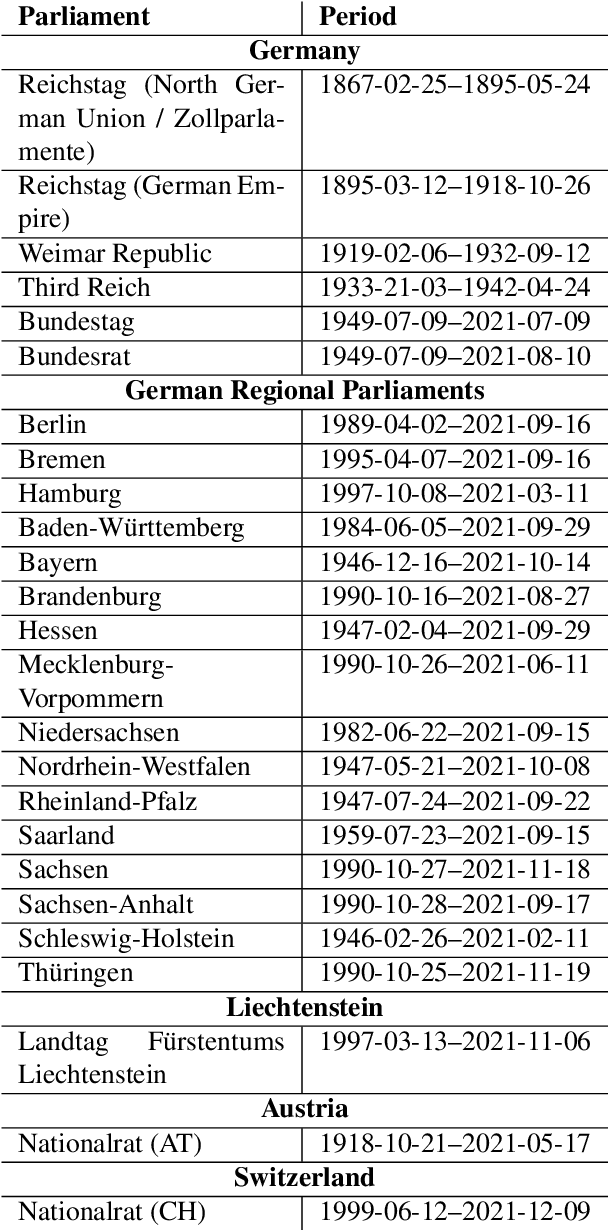
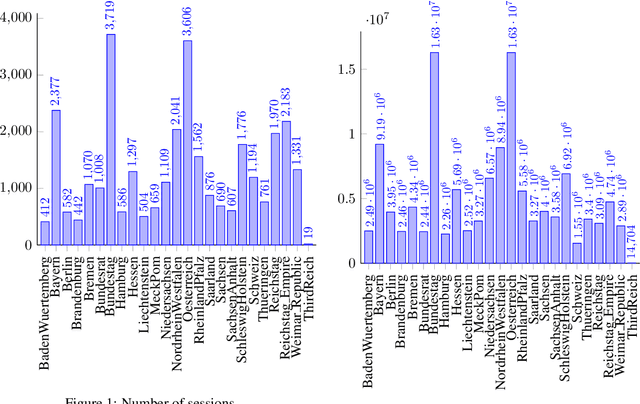
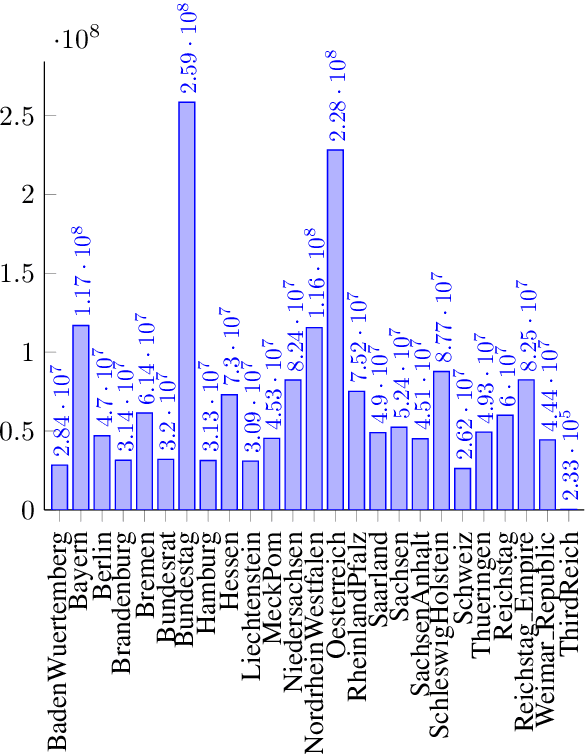
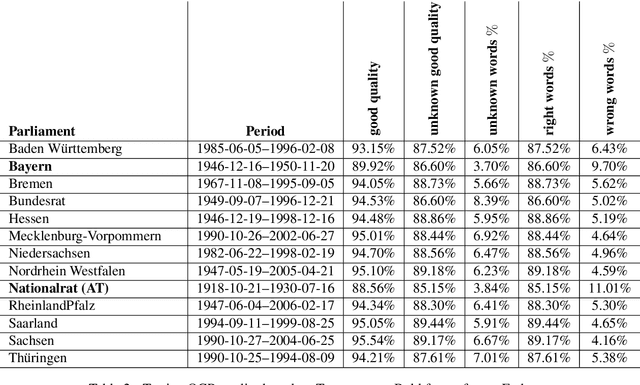
Abstract:Parliamentary debates represent a large and partly unexploited treasure trove of publicly accessible texts. In the German-speaking area, there is a certain deficit of uniformly accessible and annotated corpora covering all German-speaking parliaments at the national and federal level. To address this gap, we introduce the German Parliament Corpus (GerParCor). GerParCor is a genre-specific corpus of (predominantly historical) German-language parliamentary protocols from three centuries and four countries, including state and federal level data. In addition, GerParCor contains conversions of scanned protocols and, in particular, of protocols in Fraktur converted via an OCR process based on Tesseract. All protocols were preprocessed by means of the NLP pipeline of spaCy3 and automatically annotated with metadata regarding their session date. GerParCor is made available in the XMI format of the UIMA project. In this way, GerParCor can be used as a large corpus of historical texts in the field of political communication for various tasks in NLP.
I still have Time: Extending HeidelTime for German Texts
Apr 19, 2022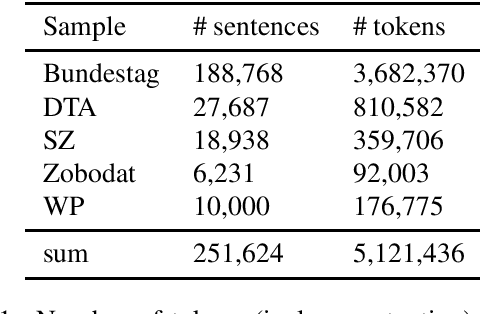
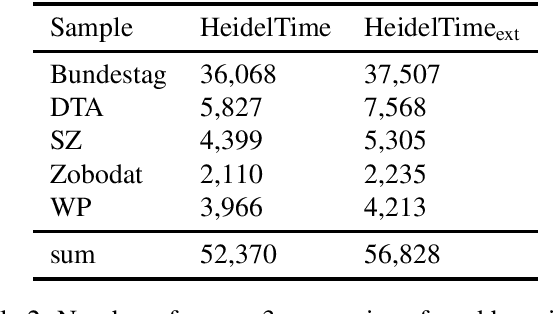
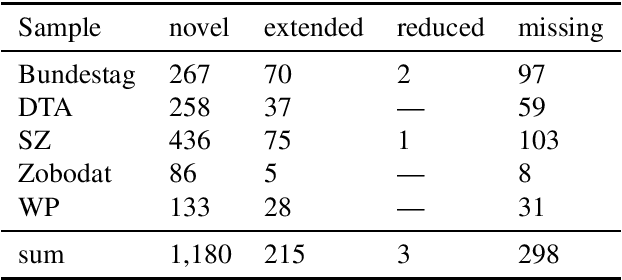
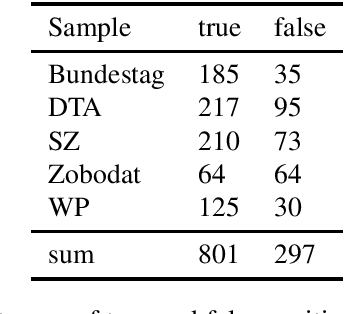
Abstract:HeidelTime is one of the most widespread and successful tools for detecting temporal expressions in texts. Since HeidelTime's pattern matching system is based on regular expression, it can be extended in a convenient way. We present such an extension for the German resources of HeidelTime: HeidelTime-EXT . The extension has been brought about by means of observing false negatives within real world texts and various time banks. The gain in coverage is 2.7% or 8.5%, depending on the admitted degree of potential overgeneralization. We describe the development of HeidelTime-EXT, its evaluation on text samples from various genres, and share some linguistic observations. HeidelTime ext can be obtained from https://github.com/texttechnologylab/heideltime.
What do Toothbrushes do in the Kitchen? How Transformers Think our World is Structured
Apr 12, 2022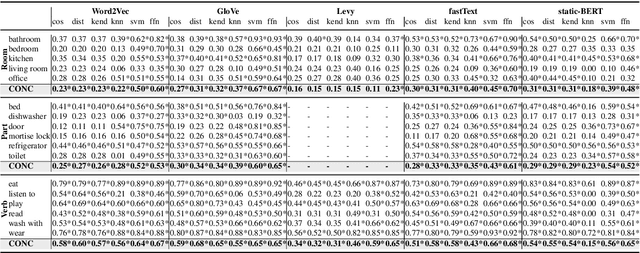
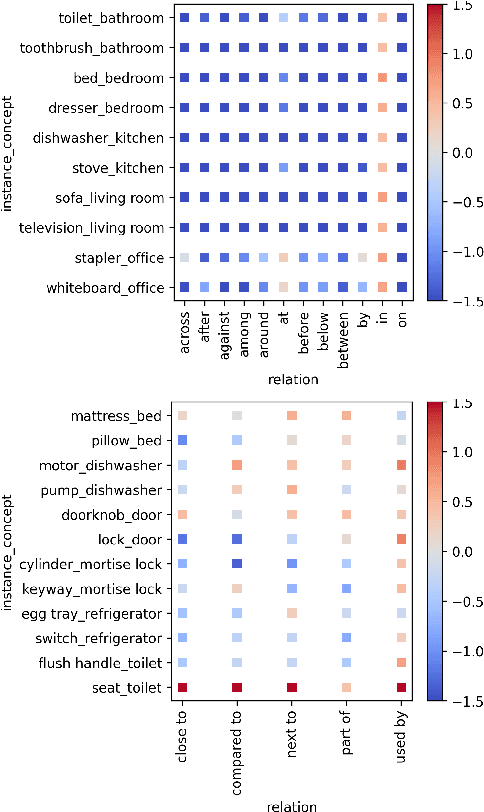
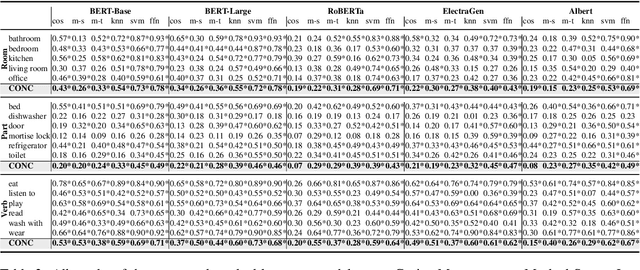
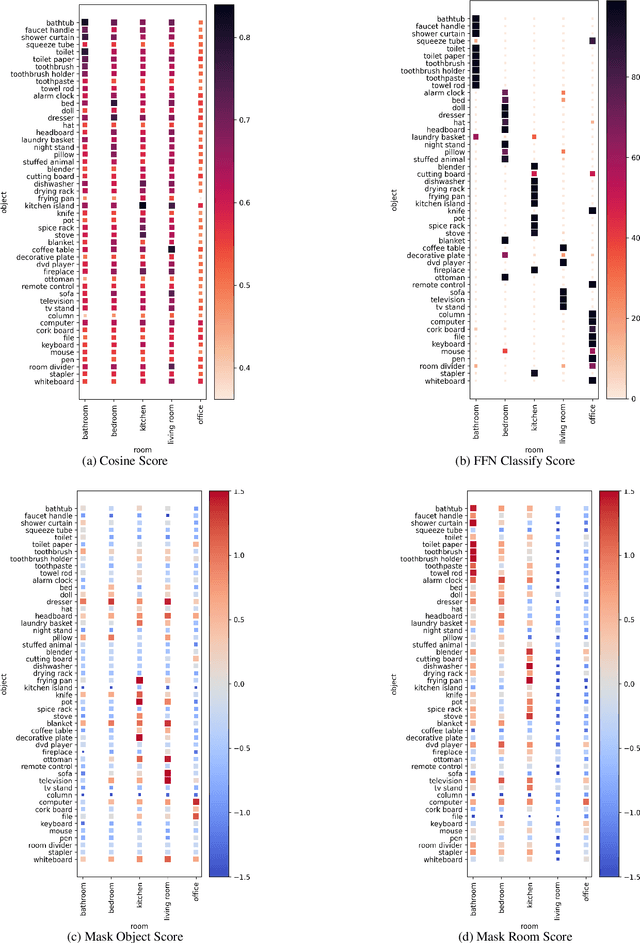
Abstract:Transformer-based models are now predominant in NLP. They outperform approaches based on static models in many respects. This success has in turn prompted research that reveals a number of biases in the language models generated by transformers. In this paper we utilize this research on biases to investigate to what extent transformer-based language models allow for extracting knowledge about object relations (X occurs in Y; X consists of Z; action A involves using X). To this end, we compare contextualized models with their static counterparts. We make this comparison dependent on the application of a number of similarity measures and classifiers. Our results are threefold: Firstly, we show that the models combined with the different similarity measures differ greatly in terms of the amount of knowledge they allow for extracting. Secondly, our results suggest that similarity measures perform much worse than classifier-based approaches. Thirdly, we show that, surprisingly, static models perform almost as well as contextualized models -- in some cases even better.
Multi-Type-TD-TSR -- Extracting Tables from Document Images using a Multi-stage Pipeline for Table Detection and Table Structure Recognition: from OCR to Structured Table Representations
May 23, 2021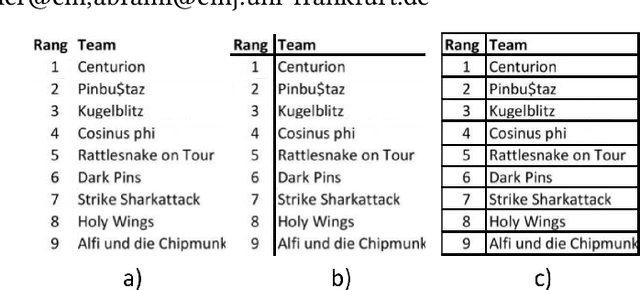
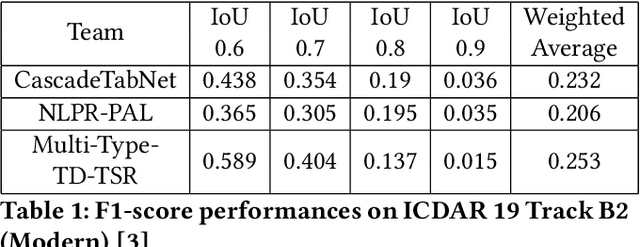
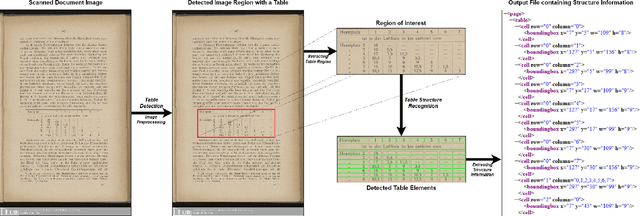

Abstract:As global trends are shifting towards data-driven industries, the demand for automated algorithms that can convert digital images of scanned documents into machine readable information is rapidly growing. Besides the opportunity of data digitization for the application of data analytic tools, there is also a massive improvement towards automation of processes, which previously would require manual inspection of the documents. Although the introduction of optical character recognition technologies mostly solved the task of converting human-readable characters from images into machine-readable characters, the task of extracting table semantics has been less focused on over the years. The recognition of tables consists of two main tasks, namely table detection and table structure recognition. Most prior work on this problem focuses on either task without offering an end-to-end solution or paying attention to real application conditions like rotated images or noise artefacts inside the document image. Recent work shows a clear trend towards deep learning approaches coupled with the use of transfer learning for the task of table structure recognition due to the lack of sufficiently large datasets. In this paper we present a multistage pipeline named Multi-Type-TD-TSR, which offers an end-to-end solution for the problem of table recognition. It utilizes state-of-the-art deep learning models for table detection and differentiates between 3 different types of tables based on the tables' borders. For the table structure recognition we use a deterministic non-data driven algorithm, which works on all table types. We additionally present two algorithms. One for unbordered tables and one for bordered tables, which are the base of the used table structure recognition algorithm. We evaluate Multi-Type-TD-TSR on the ICDAR 2019 table structure recognition dataset and achieve a new state-of-the-art.
Computational linguistic assessment of textbook and online learning media by means of threshold concepts in business education
Aug 05, 2020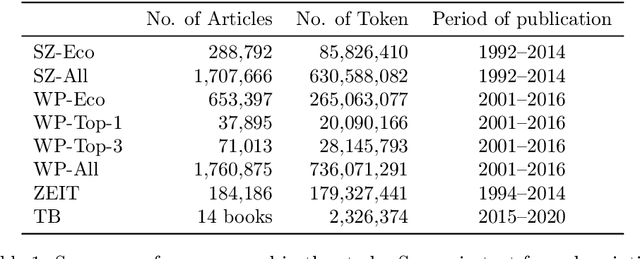
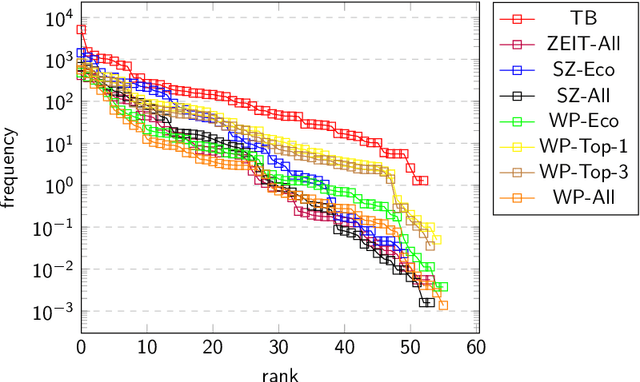

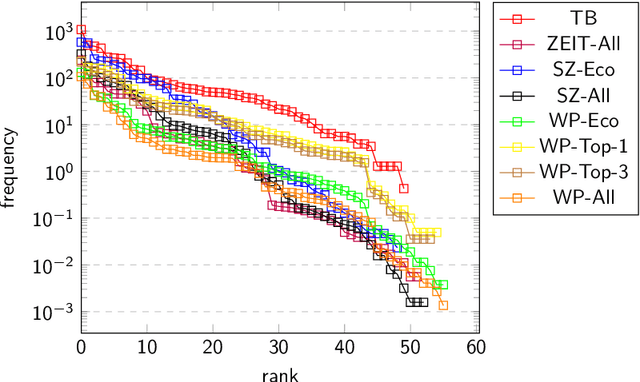
Abstract:Threshold concepts are key terms in domain-based knowledge acquisition. They are regarded as building blocks of the conceptual development of domain knowledge within particular learners. From a linguistic perspective, however, threshold concepts are instances of specialized vocabularies, exhibiting particular linguistic features. Threshold concepts are typically used in specialized texts such as textbooks -- that is, within a formal learning environment. However, they also occur in informal learning environments like newspapers. In this article, a first approach is taken to combine both lines into an overarching research program - that is, to provide a computational linguistic assessment of different resources, including in particular online resources, by means of threshold concepts. To this end, the distributive profiles of 63 threshold concepts from business education (which have been collected from threshold concept research) has been investigated in three kinds of (German) resources, namely textbooks, newspapers, and Wikipedia. Wikipedia is (one of) the largest and most widely used online resources. We looked at the threshold concepts' frequency distribution, their compound distribution, and their network structure within the three kind of resources. The two main findings can be summarized as follows: Firstly, the three kinds of resources can indeed be distinguished in terms of their threshold concepts' profiles. Secondly, Wikipedia definitely appears to be a formal learning resource.
 Add to Chrome
Add to Chrome Add to Firefox
Add to Firefox Add to Edge
Add to Edge